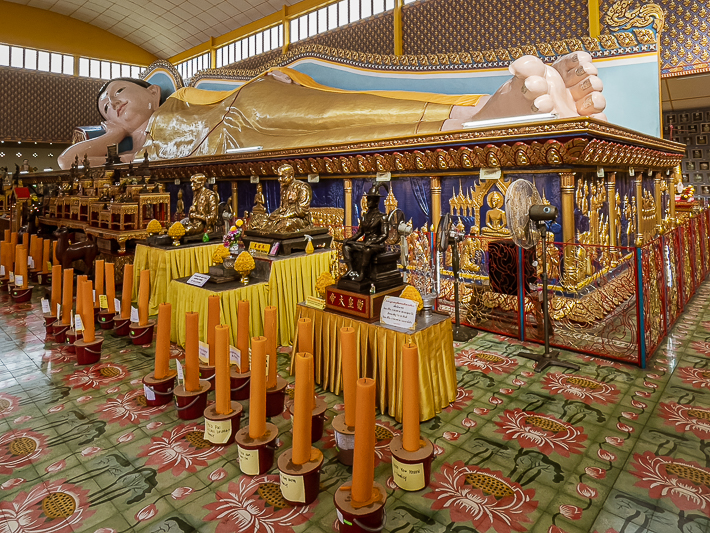
Our last stop in Malaysia was Penang Island, and George Town. Most people in the West just refer to this as Penang, Malaysia. Above is the Chaiya Mangalaram Thai Buddhist Temple, which is home to the third largest reclining Buddha in the world, measuring 108 feet long, as seen above.
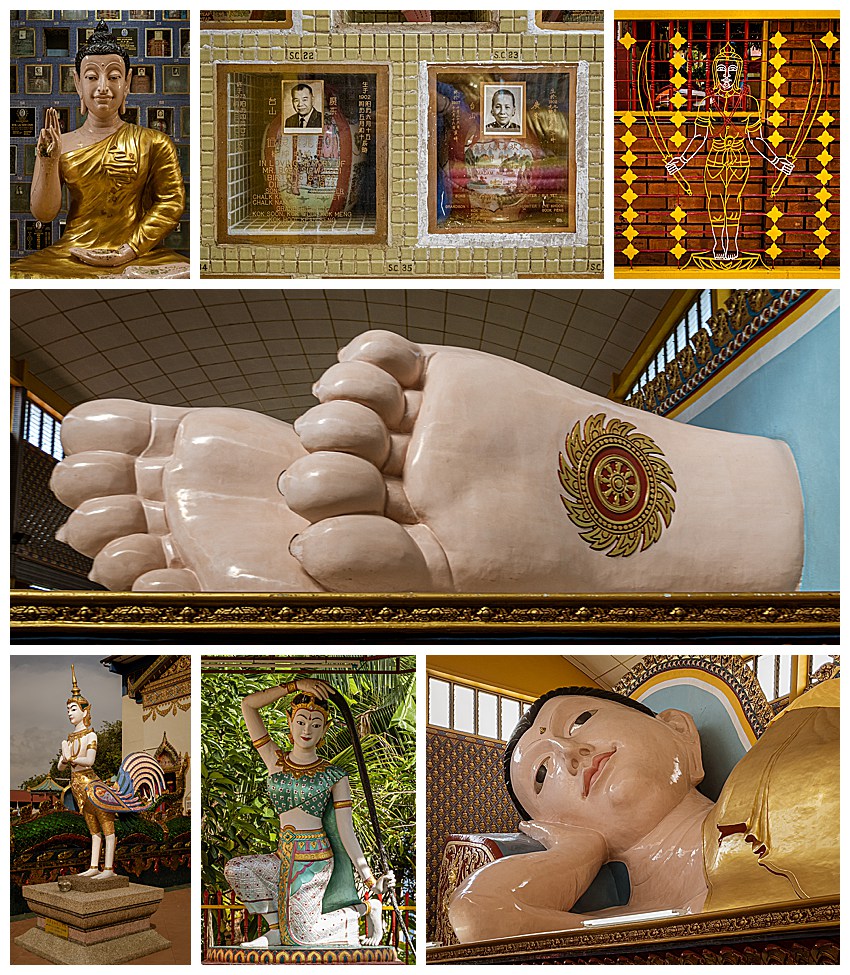
The many influences of Europe and Asia have endowed this city with a unique multicultural heritage, which can be seen in the diversity of religious sites and ethnic restaurants. George Town has 31 Chinese temples, plus a myriad of other eclectic religious sites represented by Hindu, Thai, Burmese, Taoism, Islam, and Christian. The state of Penang has a population of 1.7 million, with approximately 45% Chinese and 43% Malay.
Penang Island is known throughout Asia as Malaysia’s prime melting pot, with its wide mix of eastern cultures. Today, the different cultural and religious communities in George Town continue to live in harmonious coexistence despite their cultural and ethnic differences.
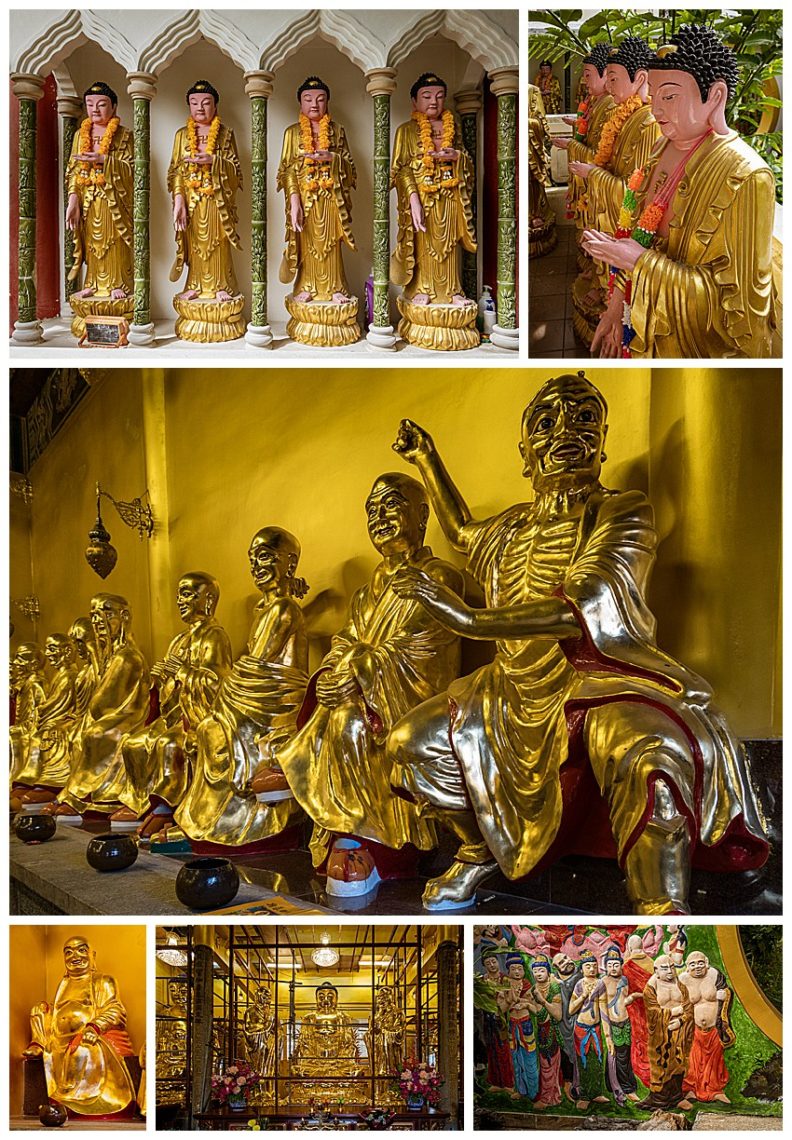
Kek Lok Si (Temple of Ultimate Happiness) is the largest Buddhist Temple in Malaysia. It is also an important pilgrimage site for Buddhists from Hong Kong, Philippines, Singapore and other countries in SE Asia. The temple is more than 130 years old, and parts of it were under reconstruction (lower-center) when we visited. The architecture is influenced by Chinese, Burmese, and Thai design.
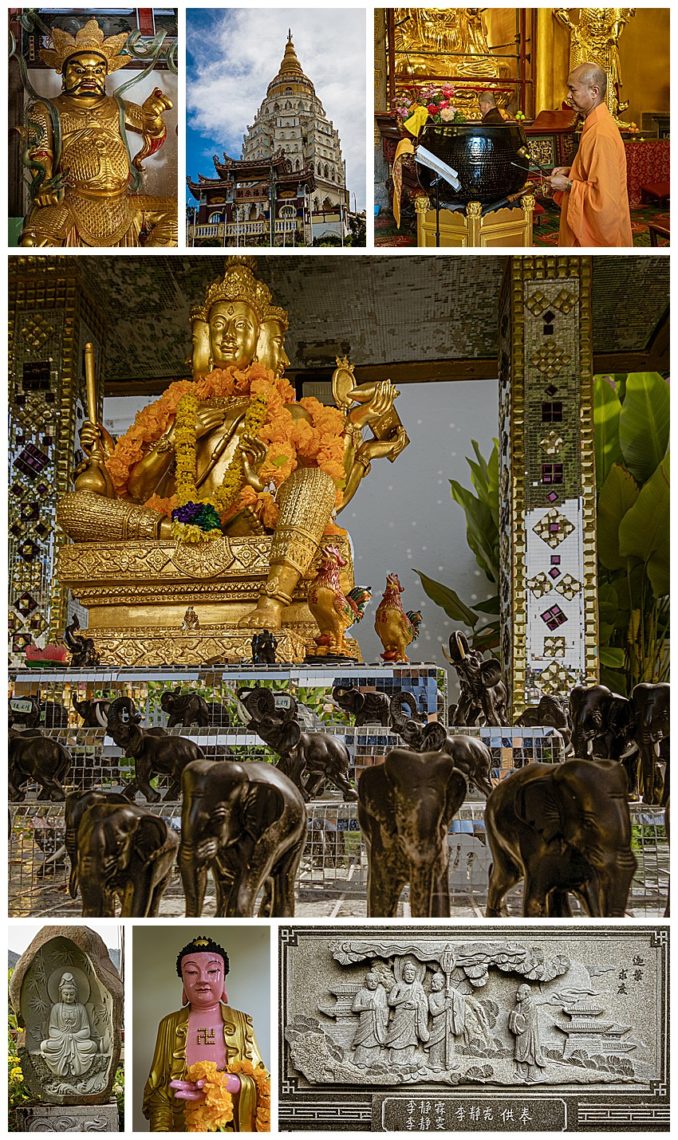
Kek Lok Si Temple complex was built between 1890-1930, and has a seven-story pagoda (upper-center) with 10,000 alabaster and bronze statues of Buddha. Another attraction of the temple is the bronze statue of the Goddess of Mercy.
There are strict open hours for this temple… but the hours listed on various signs throughout the temple all showed different hours for closing…? We decided to play it safe and leave at one of the “middle closing times” posted. Oops. Seemed the monks were using the earliest closing time, and we found ourselves locked inside the temple, with all exit gates locked. We finally found a monk who pointed us to the parking garage, out through which we could escape to the front gate, which a guard opened to let us outside to call a Grab taxi.
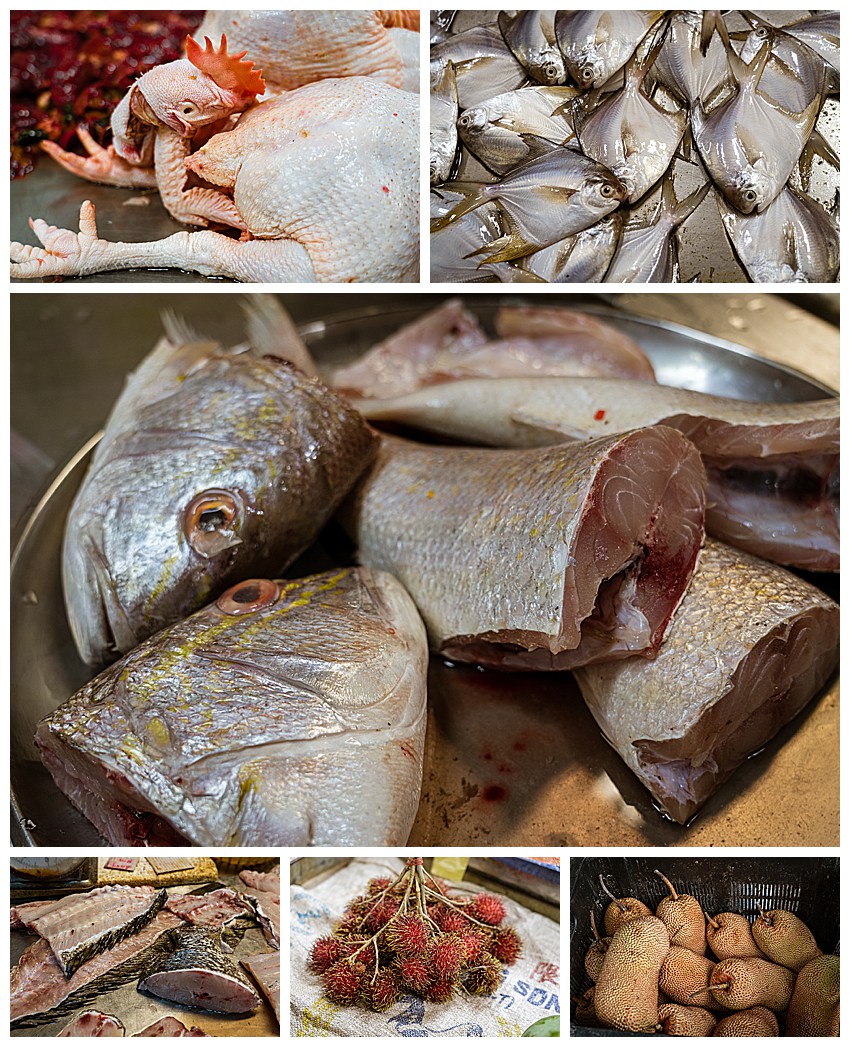
As we wandered around town, we came across a large Victorian building that was almost entirely vacant. There were signs of recent activity, but only a vendor or two present. When we returned to our hotel, we asked the owner about it, and were told that there are two great wet markets in town, but they are only open in mornings.
We decided to return in the mornings, to check out each market when they were active. Chowrasta is the oldest and largest community wet market in George Town, and provided lots of interesting browsing and images. The fish ranged from small (upper-right) to massive (center), and the butchers even cut the whole fish into steaks. There were chickens ready to take home and roast… including the first time we have seen a rooster on the counter, complete with red comb (upper left). And, of course, there was durian for sale (lower-right), as every market in Malaysia has.
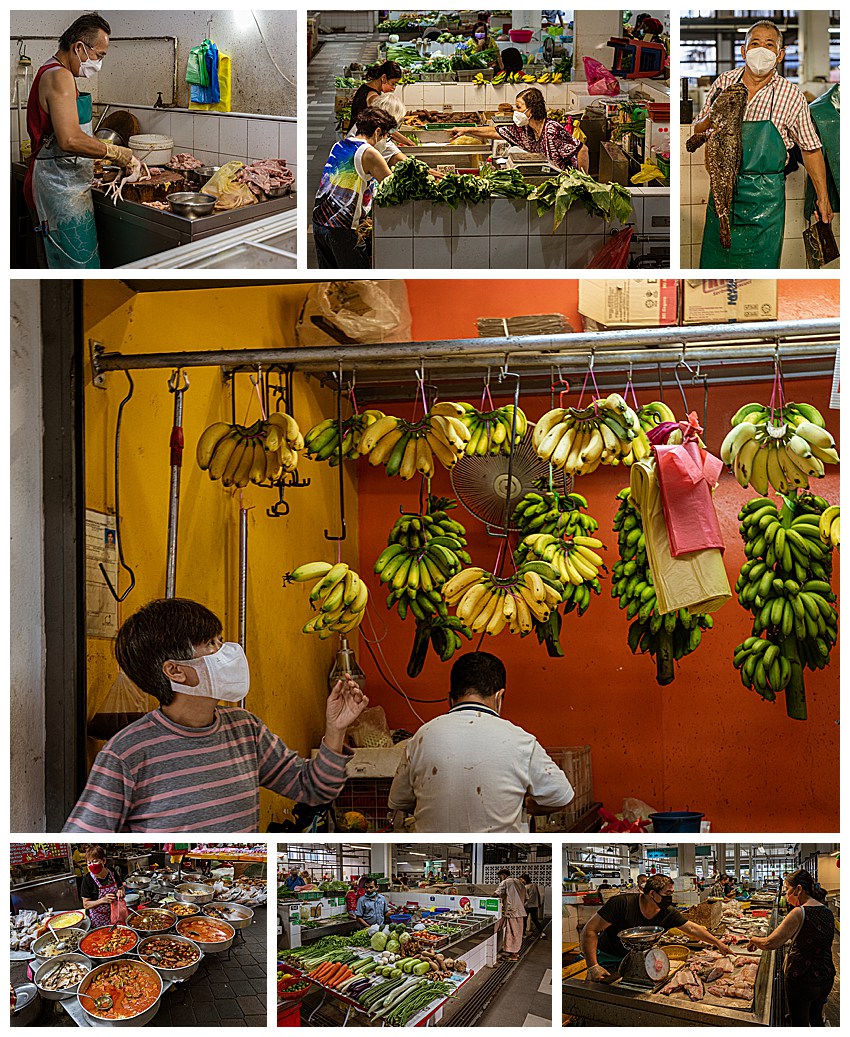
We always try to capture the life of markets we visit, and frequently interact with the vendors. Most of them are open to getting their photos taken, as was the man proudly showing off his fish (upper-right). The second of the markets we were directed to by the hotel owner was the Campbell Street Market. This is one of the most popular community markets on Penang Island.
This 75 second video tries to capture the activity of the wet market. It opens with fish being descaled, then moves on to the cutting of various fish varieties, preparing chicken, making coconut juice, and finally rapid manual peeling of shrimp.
